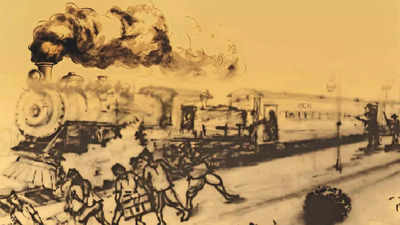Trending
What triggered CID probe into 1925 Kakori 'train dacoity' case
The inquiry, as reported in 1926 by ‘The Pioneer Daily’, a weekly newspaper run by Englishmen from Bombay (now Mumbai), which TOI has a copy of, also found that the train action was just one of the several acts planned by the revolutionaries to fuel the struggle to overthrow the British govt.
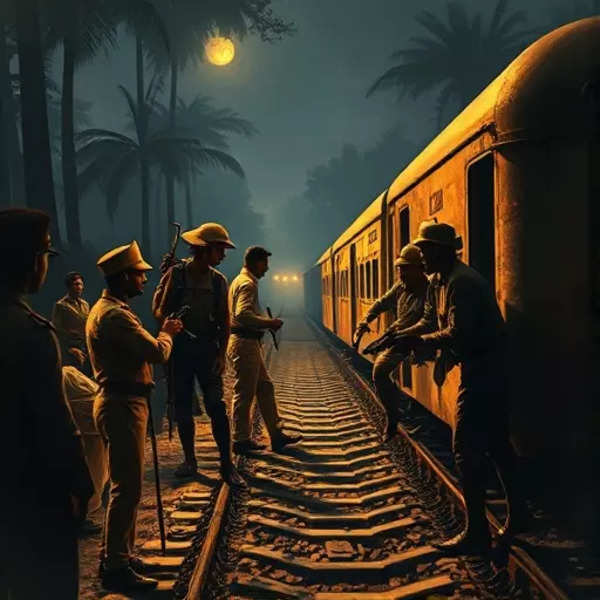
The magisterial inquiry was presided over by Syed Ainuddin, special magistrate at Lucknow, while CID team was led by RA Horton, assistant to the deputy inspector general, investigation branch of CID.
Horton visited the spot of Kakori Action (Aug 9, 1925) and formed an opinion that there was a possibility of revolutionaries behind the “train dacoity”, because of the way it was executed, the way the group interacted, their appearance, clothing, and the kind of weapons used by them — all was based on the information derived from train passengers who witness the action.
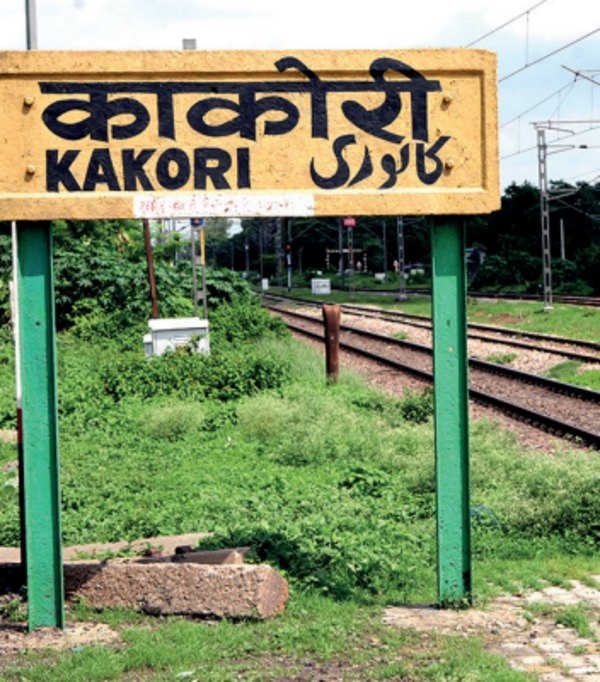
During the probe, case witness W Jones, station master of Charbagh, had said that on the night of Aug 9, 1925, HD Norton, deputy chief controller at Hazratganj railway control office, telephoned him, that No.8 Down (Moradabad-Lucknow Express) had been pulled-up between Kakori and Alamnagar, and the cash safe containing Rs 4,679 (cash receipts collected from all railway stations from Katghar to Kakori) had been taken out of the brakevan by “armed dacoits”, who were about 20-30 in number.
The No.8 Down train was expected to reach Charbagh at 7.45 pm but arrived at 8.37 pm. Body of a train passenger, Ahmad Ali, was found by railway police, lying along the rail track about a mile away from Kakori station towards Alamnagar.
After the action, the railway staff and police had deposited a ‘chaddar’ (sheet), three chisels, two screwdrivers, two hammers, 36 cartridges, five empty cartridges, one railway lantern, some papers, and four half tickets recovered from the spot.
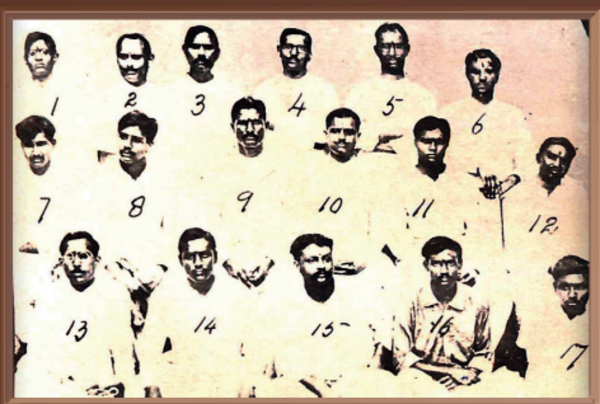
During the magisterial inquiry, Ali Murad, assistant station master of Kakori, said that the average number of secondclass tickets sold at Kakori was about 6-7 in a month, but on Aug 9 evening, he sold three second-class tickets to one man. Baiju, a porter at Kakori station, had informed investigators that at least three young men in khaki shirts and shorts came to the railway station and asked for water. The young men were also accompanied by at least 12 others who were waiting outside the railway station, he had said.
The news report citing extracts from the magistrate’s order said, “Railway police took up the investigation in the usual course, however, considering the unusual kind of circumstantial evidence, it was thought action was carried out by an organised gang of educated men, and the matter was handed over to CID, and the investigation of the case was entrusted to RA Horton.”
“Horton proceeded to collect information about the movement of political suspects. He received information that some of the currency notes taken away by the ‘dacoits’ had been recovered in Shahjahanpur. This fact naturally directed his attention to the revolutionary suspects residing at Shahjahanpur. Horton further came to know that one Indu Bhushan Mitra was acting as a courier for one of the Kakori train action suspects Ramprasad Bismil for revolutionary work,” read the news report.
The CID, through its investigation, claimed that “dacoity was to supplement the funds of the Revolutionary Party, and that it was the intention of the revolutionaries to intensify their campaign of dacoity, which included looting of post office treasure in the course of transit in one of the big towns of province, and committing a dacoity at Kankhal, near Haridwar.
Based on findings, Horton prepared warrants of arrest and launched a search for a large number of people.
The news report added, “About 250 witnesses were examined before the Special Magistrate, and over 700 exhibits both material and documentary, were produced by the prosecution. After discussing the cases of individual accused and sifting the evidence against them, the Magistrate directed that all apprehended 21 accused, including Jogeshchandra Chatterjee, Premkrishna Khanna, Mukundilal, Vishnusharan Dublish, Sureshchandra Bhattacharya, Ramkrishna Khatri, Manmathanath Gupta, Rajkumar Sinha, Thakur Roshan Singh, Ramprasad Bismil, Rajendranath Lahiri, Govindcharan Kar, Ramdulare Trivedi, Ramnath Pandey, Sachindranath Sanyal, Bhupendranath Sanyal, and Pranavesh Kumar Chatterjee, should stand their trial in the Court of Sessions on charges under Section 121A, 120B and 396 of IPC.”
A train hold-up that turned the wheels of revolution
Times of India
https://timesofindia.indiatimes.com › ... › lucknow News
4 days ago — Ninety-nine years ago in August, a group of young revolutionaries orchestrated a bold train heist at Kakori station in Lucknow.
1925 Kakori Train Action... - The Times of India, Lucknow
Facebook · The Times of India, Lucknow
10+ reactions
1925 Kakori Train Action centenary: A train hold-up that turned the wheels of revolution #KakoriKand #kakoricentenary #kakori.
====================================== 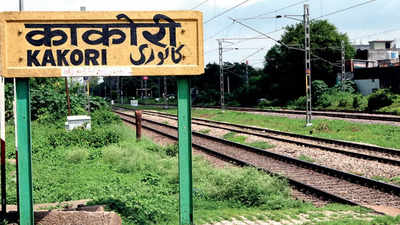
On Aug 8, they reached the Kakori station on foot but as soon as they reached the platform, they saw the 8 Down train zipping away.
Some
of them argued in sheer disbelief that it was “not their train”, even
one of them saying, “A train in India could not be so regular”.
However, a smarter one rushed to the platform reception and roke the bad news that it was their train, leaving the members sulking. They were late by 10 minutes.
Team leader Ram Prasad Bismil was quick to realise that the task in their hand was too different from the regular village hold-ups they were used to and required precision and synchronization to a degree of which the group was not fully capable. They retreated to their base and improvised the plan.
The next day (Aug 9), they decided to take no chances and left Lucknow to reach the previous station and boarded the train.
Three of them –Ashfaqullah Khan, Rajendranath Lahiri and Bakshi – took second class tickets and the remaining including Ram Prasad Bismil,
According to the plan, those in the second class pulled the chain. The abrupt stoppage led to some commotion. The members jumped out to execute the plan. One of them rushed towards the engine while another headed to overpower the guard and take charge of the railway treasury. Carrying Germany-made Mauser pistols, they were quick to overpower the guard who was made to lie down on his belly. Two men stood on each side of the railway line while another group pushed out the heavy iron safe carrying railway collections from the stations on the route. Two of them who carried a huge hammer and chisel got into action on the safe.
Passengers were being told in Hindustani that the men did not intend to harm them and that they were only after govt property. They were asked neither to come out of the carriages nor to protrude their necks from inside the compartments.
From time to time, bullets were sent flying to ensure cooperation from passengers.
Everything was progressing as planned. After some time, the men trying to break open the safe felt the need for a bigger hammer. Fearing that the plan would be foiled if the safe did not open, the well-built Ashfaq handed over the Mauser to his young fellow Manmathnath. He took up the hammer and began to work with full force. Just at this time, when they imagined success was round the corner, the rumbling of an approaching train was heard. The headlight of the other train left them with questions… Could they have got the news of a train hold-up? Has there been foul play or betrayal? What if it was a military train?
The possibilities left them chilled to the marrow. A few minutes later, commitment to the cause took over and all decided to face what may come. Ram Prasad came close to the point of action and said it could be the usual Punjab Mail passing by.
He told Ashfaq and others to drop the hammer for a while and told others to conceal their weapons and lie low. With the terrific speed of the train and its deafening clickety clack, the group’s bad dream had passed by. The rumbling of the train grew fainter while Ashfaq’s patient clang captured the air.
Soon, a big hole had been made in the armour of the safe. They took the bags and collected them on a bed sheet. The operation was over and orders for retreat were given. To mislead the passengers, including some British Military officers, the group dispersed in a manner to give the impression of running away from Lucknow, but they detoured and entered the city from the overcrowded Chowk market. On the way to Lucknow, they had taken cash and thrown the bags in ditches filled with rainwater. In Lucknow, the booty was kept at a safe place known only to Ram Prasad. The weapons also went to prearranged concealing places.
Thereafter, the group disintegrated. Some went to hideouts and others lay low in common places like parks.
At dawn, newspaper hawkers were heard announcing on the top of their voices – ‘Sensational Train Hold-Up at Kakori’ – confirming the success of their nationalist effort.
A train hold-up that turned the wheels of revolution
Ninety-nine
years ago in August, a group of young revolutionaries orchestrated a
bold train heist at Kakori station in Lucknow. Initially missing their
intended train, they improvised and executed their plan the next day.
The heist, targeting government property, succeeded despite a few
setbacks, and signaled their commitment to India's nationalistic cause.

Railway station at Kakori near Lucknow
On Aug 8, they reached the Kakori station on foot but as soon as they reached the platform, they saw the 8 Down train zipping away.
Revolutionaries
involved in Kakori Train Action (from 1-17) Jogeshchandra Chatterjee,
Premkrishna Khanna, Mukundilal, Vishnusharan Dublish, Sureshchandra
Bhattacharya, Ramkrishna Khatri, Manmathnath Gupta, Rajkumar Sinha,
Thakur Roshan Singh, Ram Prasad Bismil, Rajendranath Lahiri,
Govindcharan Kar, Ramdulare Trivedi, Ramnath Pandey, Sachindranath
Sanyal, Bhupendranath Sanyal and Pranvesh Kumar Chatterjee
However, a smarter one rushed to the platform reception and roke the bad news that it was their train, leaving the members sulking. They were late by 10 minutes.
Team leader Ram Prasad Bismil was quick to realise that the task in their hand was too different from the regular village hold-ups they were used to and required precision and synchronization to a degree of which the group was not fully capable. They retreated to their base and improvised the plan.
The next day (Aug 9), they decided to take no chances and left Lucknow to reach the previous station and boarded the train.
Three of them –Ashfaqullah Khan, Rajendranath Lahiri and Bakshi – took second class tickets and the remaining including Ram Prasad Bismil,
Chandrashekhar
Azad, Mukundilal, Murarilal, Kundanlal, Banwarilal and Manmathnath
Gupta, travelled third and spread over the entire train.
According to the plan, those in the second class pulled the chain. The abrupt stoppage led to some commotion. The members jumped out to execute the plan. One of them rushed towards the engine while another headed to overpower the guard and take charge of the railway treasury. Carrying Germany-made Mauser pistols, they were quick to overpower the guard who was made to lie down on his belly. Two men stood on each side of the railway line while another group pushed out the heavy iron safe carrying railway collections from the stations on the route. Two of them who carried a huge hammer and chisel got into action on the safe.
Passengers were being told in Hindustani that the men did not intend to harm them and that they were only after govt property. They were asked neither to come out of the carriages nor to protrude their necks from inside the compartments.
From time to time, bullets were sent flying to ensure cooperation from passengers.
Everything was progressing as planned. After some time, the men trying to break open the safe felt the need for a bigger hammer. Fearing that the plan would be foiled if the safe did not open, the well-built Ashfaq handed over the Mauser to his young fellow Manmathnath. He took up the hammer and began to work with full force. Just at this time, when they imagined success was round the corner, the rumbling of an approaching train was heard. The headlight of the other train left them with questions… Could they have got the news of a train hold-up? Has there been foul play or betrayal? What if it was a military train?
The possibilities left them chilled to the marrow. A few minutes later, commitment to the cause took over and all decided to face what may come. Ram Prasad came close to the point of action and said it could be the usual Punjab Mail passing by.
He told Ashfaq and others to drop the hammer for a while and told others to conceal their weapons and lie low. With the terrific speed of the train and its deafening clickety clack, the group’s bad dream had passed by. The rumbling of the train grew fainter while Ashfaq’s patient clang captured the air.
Soon, a big hole had been made in the armour of the safe. They took the bags and collected them on a bed sheet. The operation was over and orders for retreat were given. To mislead the passengers, including some British Military officers, the group dispersed in a manner to give the impression of running away from Lucknow, but they detoured and entered the city from the overcrowded Chowk market. On the way to Lucknow, they had taken cash and thrown the bags in ditches filled with rainwater. In Lucknow, the booty was kept at a safe place known only to Ram Prasad. The weapons also went to prearranged concealing places.
Thereafter, the group disintegrated. Some went to hideouts and others lay low in common places like parks.
At dawn, newspaper hawkers were heard announcing on the top of their voices – ‘Sensational Train Hold-Up at Kakori’ – confirming the success of their nationalist effort.
End of Article
FOLLOW US ON SOCIAL MEDIA
